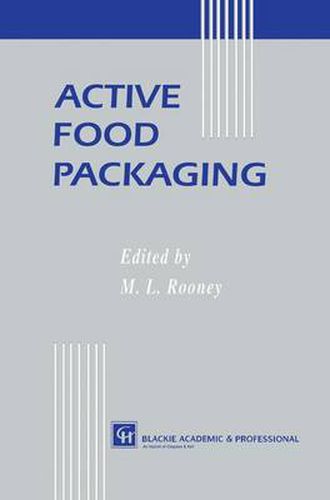Readings Newsletter
Become a Readings Member to make your shopping experience even easier.
Sign in or sign up for free!
You’re not far away from qualifying for FREE standard shipping within Australia
You’ve qualified for FREE standard shipping within Australia
The cart is loading…






This title is printed to order. This book may have been self-published. If so, we cannot guarantee the quality of the content. In the main most books will have gone through the editing process however some may not. We therefore suggest that you be aware of this before ordering this book. If in doubt check either the author or publisher’s details as we are unable to accept any returns unless they are faulty. Please contact us if you have any questions.
Food packaging materials have traditionally been chosen to avoid unwanted interactions with the food. During the past two decades a wide variety of packaging materials have been devised or developed to interact with the food. These packaging materials, which are designed to perform some desired role other than to provide an inert barrier to outside influences, are termed ‘active packaging’. The benefits of active packaging are based on both chemical and physical effects. Active packaging concepts have often been presented to the food industry with few supporting results of background research. This manner of introduction has led to substantial uncertainty by potential users because claims have sometimes been based on extrapolation from what little proven information is available. The forms of active packaging have been chosen to respond to various food properties which are often unrelated to one another. For instance many packaging requirements for post harvest horticultural produce are quite different from those for most processed foods. The object of this book is to introduce and consolidate information upon which active packaging concepts are based. Scientists, technologists, students and regulators will find here the basis of those active packaging materials, which are either commercial or proposed. The book should assist the inquirer to understand how other concepts might be applied or where they should be rejected.
$9.00 standard shipping within Australia
FREE standard shipping within Australia for orders over $100.00
Express & International shipping calculated at checkout
This title is printed to order. This book may have been self-published. If so, we cannot guarantee the quality of the content. In the main most books will have gone through the editing process however some may not. We therefore suggest that you be aware of this before ordering this book. If in doubt check either the author or publisher’s details as we are unable to accept any returns unless they are faulty. Please contact us if you have any questions.
Food packaging materials have traditionally been chosen to avoid unwanted interactions with the food. During the past two decades a wide variety of packaging materials have been devised or developed to interact with the food. These packaging materials, which are designed to perform some desired role other than to provide an inert barrier to outside influences, are termed ‘active packaging’. The benefits of active packaging are based on both chemical and physical effects. Active packaging concepts have often been presented to the food industry with few supporting results of background research. This manner of introduction has led to substantial uncertainty by potential users because claims have sometimes been based on extrapolation from what little proven information is available. The forms of active packaging have been chosen to respond to various food properties which are often unrelated to one another. For instance many packaging requirements for post harvest horticultural produce are quite different from those for most processed foods. The object of this book is to introduce and consolidate information upon which active packaging concepts are based. Scientists, technologists, students and regulators will find here the basis of those active packaging materials, which are either commercial or proposed. The book should assist the inquirer to understand how other concepts might be applied or where they should be rejected.